Content
Hokkaido pumpkin is a compact, portioned pumpkin that is especially popular in Japan. In France this variety is called Potimaron. Its taste differs from traditional pumpkin and is more reminiscent of the taste of roasted chestnut with a slight hint of nut. A feature of the Hokkaido variety is also the possibility of eating the fruits with the peel, which becomes soft when cooked.
Description of Japanese Hokkaido pumpkin
The Hokkaido variety belongs to the herbaceous plant of the Cucurbitaceae family. Belongs to the Japanese selection. From the photo of the Hokkaido pumpkin you can see that it forms a powerful, strong and climbing plant with long vines. Growing on trellises is suitable for this crop. The stems form rounded stems that grow 6-8 m.
The Hokkaido variety refers to large-fruited pumpkins, which can be distinguished from others by their rounded stalk. It blooms with large, numerous, yellow flowers. The leaves of the Hokkaido variety are large and heart-shaped. The variety is distinguished by its early ripening period - about 3 months. Hokkaido pumpkins can be stored for 10 months without retaining their flavor.
A variety of Japanese Hokkaido pumpkin, the seeds of which can be found in Russia, is the popular hybrid Ishiki Kuri Hokkaido f1. This pumpkin is distinguished by its bright orange color, pear-shaped fruit and high yield. The hybrid is recommended as a vegetable for autumn consumption. The fruits can be stored for 6 months. During storage, their taste becomes simpler and the vegetables begin to deteriorate.
The Ishiki Kuri variety is included in the Belarusian State Register of Breeding Achievements, but is not listed in the Russian one.
Description of fruits
The color of mature Hokkaido pumpkins can be grey, green, yellow or orange. Shaped like a slightly flattened ball or teardrop-shaped. All varieties of Hokkaido pumpkin are very decorative. The peel is elastic, the flesh is sweet.
Pumpkin Ishiki Kuri Hokkaido f1, according to reviews, is distinguished by dense, starchy pulp. When processed, the pulp becomes pasty, reminiscent of potato consistency. Fiber is not noticeable in the pulp. The sugar and liquid content is low. Therefore, the taste of pumpkin is not very sweet and even bland.
The peel of Ishiki Kuri is thin, without pronounced ridges. But cutting the fruit requires effort. The peel becomes completely soft when cooked. Fruit weight is from 1.2 to 1.7 kg. Diameter is about 16 cm. The fruits of Ishiki Kuri Hokkaido f1 are also highly decorative. They are characterized by an oblong neck and a protruding, not depressed stalk. Deformations may occur on the peel.
Characteristics of varieties
Ishiki Kuri Hokkaido pumpkin f1 is well adapted to weather conditions. The plant is hardy and drought-resistant. Suitable for growing in warm and temperate climates. The hybrid is highly productive. Each vine produces several fruits.One plant produces 10 small pumpkins.
Seed growth vigor is average. In warm regions, seeds can be planted by direct sowing in the ground in May. In other regions, crops are grown through seedlings. In order for the fruits to be large and have time to ripen, it is necessary to limit the growth of the vines. The fruits appear in late August - early September.
It is recommended to remove the fruits of Ishiki Kuri Hokkaido f1 as they ripen, so their taste will be better.
Hokkaido pumpkin can be grown in vertical culture. Bright pumpkins look very decorative against the backdrop of large, green leaves. The plant is used to decorate southern fences and small trees that will not obscure the vines.
Resistance to pests and diseases
Hokkaido and Ishiki Kuri pumpkins show general resistance to common pumpkin diseases. The crop exhibits its best properties when grown in a sunny area. In shaded or marshy areas, plants can be affected by aphids and fungal diseases.
To prevent diseases, observe crop rotation, planting plants on rested soil or after the growth of legumes and cabbage. A large planting area promotes the growth of healthy plants.
Advantages and disadvantages
Hokkaido pumpkin has a rich vitamin composition, as well as a high content of trace elements and amino acids. It is a valuable product for healthy and dietary nutrition. A special feature of the Ishiki Kuri Hokkaido f1 variety is the ability to consume the fruits fresh. The portion size is convenient to use. Vegetables of this variety can be consumed with the peel.
Recipes suggest frying Hokkaido pumpkin like potatoes, baking it in pieces, and preparing paste-like soups.Whole pumpkins are used as pots for stuffing when preparing desserts and main courses.
The disadvantages of the Ishiki Kuri Hokkaido f1 variety include the fact that the fruits are not suitable for making candied fruits. And the seeds are unsuitable for processing and consumption.
Growing technology
Japanese Hokkaido pumpkin is a crop that requires heat and light. Place it in areas that are well lit throughout the day. For strongly climbing plants, trellises, cones or huts are installed. To grow, plantings of this variety need a lot of useful substances, which they take from the soil. Therefore, chernozems, sandy loam soils and light loams are more suitable for cultivation.
The Hokkaido variety has one of the shortest ripening periods for pumpkin crops - 95-100 days. Seeds can be planted by direct sowing into the ground. For the initial phase of growth, the sprouts are provided with shelter in the form of a small greenhouse. Seeds germinate at a temperature of +14°C. But the optimal temperature is considered to be +20...+25°C, at which sprouts appear within a week.
Even slight frosts are harmful to the plant. Therefore, in regions with cold springs, the Hokkaido variety is grown through seedlings. Sowing begins at the end of April.
Melons do not tolerate well when their root system is disturbed, so it is better to grow seedlings in peat pots. You can put 2 seeds in one container.The hole for sowing is made 5-10 cm deep. When two sprouts germinate, one seedling is left, which is stronger. A plant with 4-5 true leaves is transplanted into open ground.
Add to the hole during transplantation:
- 150 g ash;
- 100 g sawdust;
- 50 g superphosphate.
After transplantation, the plants are watered with any growth stimulant.
Pumpkin does not like dense plantings, so in open ground each plant is planted at a distance of 1 m from each other. And also away from zucchini. After setting several fruits, the main stem is pinched, leaving 4-5 leaves at the top.
Pumpkin is drought resistant due to its developed root system. It needs to be watered infrequently, but abundantly. Plantings of the Hokkaido variety are watered once a week, using 20-30 liters of water per 1 square meter. m.
When growing pumpkin, several feedings are necessary during the growth period. Fertilizers are used in dry and liquid form. It is best to alternate organic and mineral fertilizers.
Required fertilizers:
- nitrogen – added during planting, stimulate growth, prevent wilting of the vegetative mass;
- phosphorus – applied at the beginning of the formation of ovaries;
- potassium – used during flowering.
When using liquid organic fertilizers, do not allow them to get on the leaves and stems.
It is not recommended to keep the Hokkaido pumpkin on the vine and collect it as it ripens. The last fruits are harvested before frost sets in. Remove the pumpkins together with the stem, being careful not to damage the skin. This way, vegetables will last longer. The pumpkin is best kept at a temperature of +5... +15C in a dark room. When storing, it is important that Hokkaido pumpkins do not come into contact with each other.It is recommended to store Ishiki Kuri pumpkins for no longer than six months.
Conclusion
Hokkaido pumpkin became famous for Russian gardeners not so long ago. A variety of pumpkin crop that came from Japan is well acclimatized to Russian latitudes. Small portioned fruits are convenient to eat and contain a wide range of useful substances. Ishiki Kuri Hokkaido pumpkin is recommended to be consumed for a balanced and dietary diet.
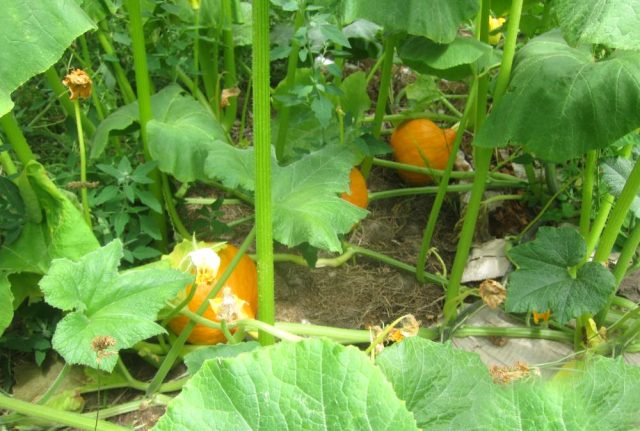
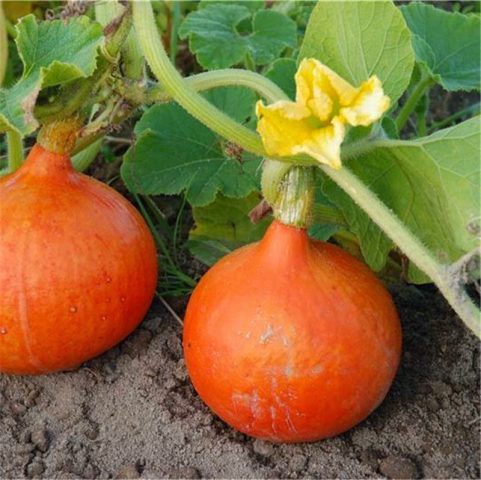
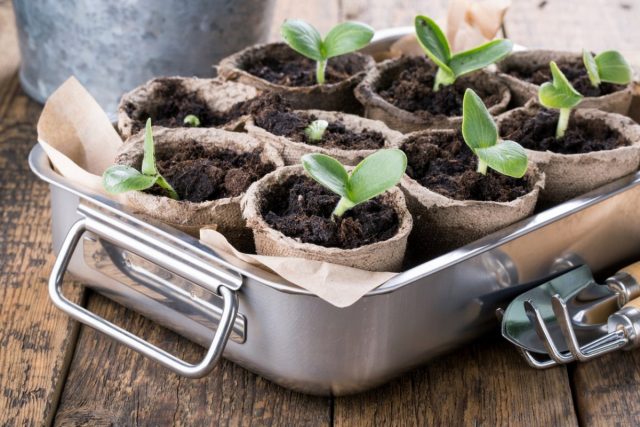

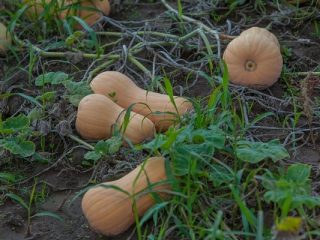

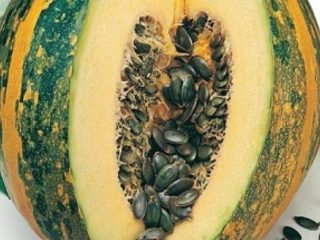
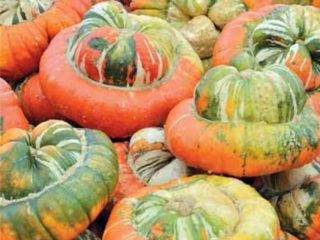
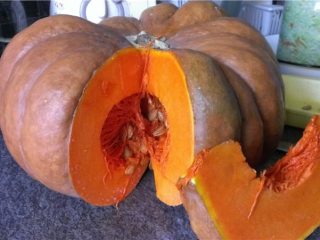


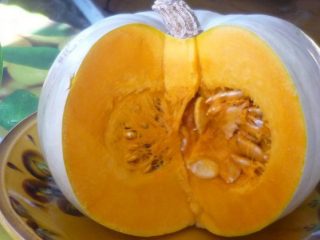
I really liked this pumpkin - very productive, beautiful!!!!